A whole-house generator supplies power to your entire house in the event of a power outage. This can be a lifesaver during a storm or other emergency when the power is out for an extended period of time.
A solar generator has the added advantage of recharging using solar power which adds to another advantage. Through the lessons of natural disasters where people lost access to power, access to roads, and even gas. Solar generators gained more importance as they could continue to provide power in extreme circumstances as the sun will always shine.
In this article, we take you through the development of solar generator technology, how to size your system, choose to buy the best one to fit your needs, and why you need a LiFePO4-powered Solar Generator and why the Inverter is the most important feature.
Evolution of the Solar Generator
There are various types of solar configurations; Grid-tied systems, off-grid systems, and hybrid systems that combine the two. We’ll cover these in detail later in the article but all three have an option to configure a solar backup system.
A solar backup system also called a solar battery bank designed to supply power to the home when a power outage occurs. Solar energy from the panels is fed to the battery through a charge controller, and then from the battery it goes through an inverter that powers your appliances.
As batteries became smaller through the use of AGM and later Lithium batteries, charge controllers, and inverters became more efficient, these components were combined in a box to create a power station that could be recharged using solar panels.
The name solar generators came to be because of the similar look to inverter generators. But a solar generator is not the conventional type of generator. For it to qualify as a generator it has to have some dynamo mechanical movement that is converted to electrical energy. However, it will power your appliances all the same as with generators it has an inverter rating and it does produce electricity.
What Size Solar Generator to Run a Home?
Inverter rating and watt-hour rating are two important parameters that are used to size a solar generator. By knowing both the inverter rating and watt-hour rating of a solar generator, you can determine the maximum load that it can handle and how long it can provide power. This information is important in sizing a solar generator to meet your specific power needs.
Inverter Rating
Solar generators come in a variety of sizes and power ratings. Some solar generators are small enough to fit in a backpack, while others are large enough to power an entire house.
The size of the inverter will determine the maximum amount of power that the solar generator or portable power station can deliver to the loads. If you have higher power demands, such as running power tools or appliances, you will need a larger inverter with a higher output.
The size and power rating of the solar generator you need will depend on your needs.
- 150 – 300 watts: This is a good size for powering small appliances and devices, such as lights, fans, and cell phone chargers.
- 500 – 700 watts: This is a good size for powering larger appliances, such as refrigerators and microwaves.
- 1,000 – 1500 watts: This is a good size for powering a whole house, including appliances, lights, and electronics.
- 2,000 – 3,000 watts: This is a good size for powering the whole house that includes large appliances, such as air conditioners and electric stoves.
Watt-hour Rating
In order to size your solar generator, you’ll need to add up your power requirements. The wattage of every appliance is indicated on the nameplate. Take every appliance in your home take the Wattage and multiply by how long you use the device. This will give you the Wh requirements for your solar generator. Be sure to also take into consideration the surge watt rating of the devices vs the running watts.
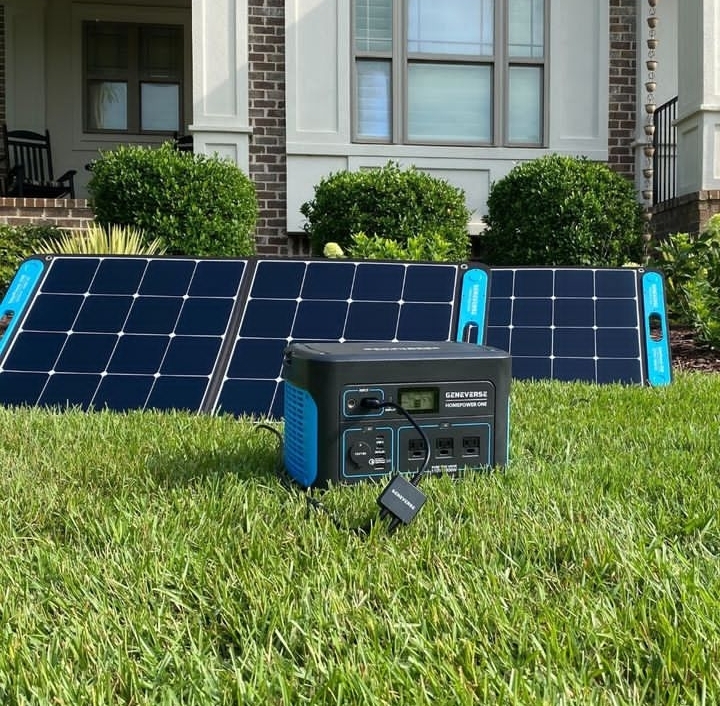
According to the EIA, the average power consumption in a typical household is around 893 kWh per month or shy of 30 kWh per day. To match this consumption to a battery you will need around 2500 ah to run a house, that’s around thirteen 200 ah batteries.
Even the Tesla Powerwall only comes to around 13Kwh and costs more than $10,000. Quite a lot and expensive endeavor. However because we are looking at a backup, you will only be powering your most critical appliances. This includes refrigerators, lights, laptops, and maybe a coffee maker once in a while. For this setup, you won’t need as much power.
| Appliance | Wattage (Watts) | Running Time | Watt-Hours |
| Refrigerator | 200 Watts | 8 hrs | 1600 |
| 5 LED Lights | 25 Watts | 10 hrs | 250 |
| Laptop | 60 Watts | 5 hrs | 300 |
| Coffee Maker (Single Cup) | 600 Watts | 10 mins | 100 |
| Hair Dryer | 1250 Watts | 10 mins | 208 |
| Microwave | 1000 Watts | 12 mins | 200 |
| Total | 2658 |
Just to run the essential items in a home you will need around 3000 Watt-hours a day. The best thing about a solar generator is that it can be recharged using a solar panel so you can use the high-wattage devices early in the morning you can recharge the battery pack during the sunlight hours.
To completely run a house off a solar generator you’ll have to run it like a camper reducing unnecessary appliances, replacing some with 12v appliances, and running only your critical loads off your solar system. You can also combine a battery back with a solar generator.
Why LiFePO4 (Lithium Iron Phosphate Batteries)Lithium Iron Phosphate batteries are the safest type of lithium-ion technology. They are actually safer than the lithium-ion batteries used in phones and laptops and as they are less susceptible to thermal runway which can lead to an explosion. As mentioned before they have also come to replace AGM batteries in off-grid systems as they require low maintenance and are very efficient when charging and discharging.
Our Recommendation: The Best Solar Generator for Home
Our Recommendation is the EF EcoFlow 1260Wh with an 1800-watt running watt rating and 3300 surge watts Inverter. The best thing about the Ecoflow is that you can recharge it from 0 to 80% in one hour with 400W Universal Solar input.
Portable Solar Generators (Quick Guide)
Unlike having portable chargers, you will still be needing a straight power source for power-ups. Even indoors, solar generators will always come in handy and useful as well. Most of the solar generators will only just power up a house for a pretty shorter time, but if you want larger power-ups you can just typically find yourself a bigger or larger generator for boosts.
The solar panel gathers and harnesses the energy that the sun emits, and stores this energy in the battery that can be used later on. It also has an inbuilt Sinewave Inverter that allows AC Power to be produced and used safely with your devices.
The key details that are very important in a portable solar generator are portability, component quality, battery storage capacity, balanced system design, and solar PV input.
Portability
The mobility factor must be given utmost importance. A portable power station is a great energy solution for families who love camping or staying outdoors. These handy and small portable generators can be a great choice considering that they can function efficiently and yet do not take up a lot of space. Some generators are designed like a briefcase which makes handling and moving a lot easier.
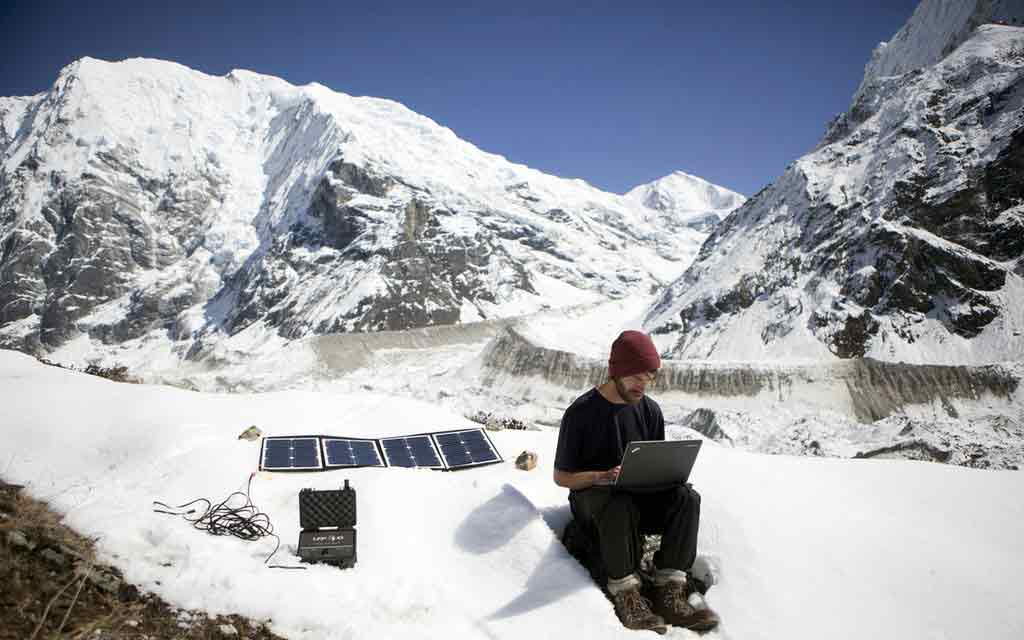
You can use them on travels and long trips wherein your batteries may not sustain in terms of power. There is only one thing that you will ever need, and that is the sun. There are also smaller versions of the solar energy generator which are typically very lightweight and can be assembled easily as well. It can also be taken anywhere you want to. Their ability to be very portable makes them very popular and are used widely by travelers and energy enthusiasts.
Component Quality
Quality and durability are TWO essential components that you should find in a portable solar generator. The generator must not only be handy but it should also pass all the set quality standards to ensure its efficacy and reliability. Never go for a cheap one that does not guarantee the best quality and performance. For example, an MPPT controller gives a better performance than a PWM controller for many reasons.
Battery storage capacity
An effective portable generator must have ample battery storage which allows the owner to use it even during times of limited sun. Always follow the battery recommendations or better yet, do your own research through portable generator reviews so you can have an idea of the ideal storage capacity of the battery.
Balanced system design
The important combination for a balanced design for the generator system should have the following factors: solid PV input, usable storage capacity, and as well as an applicable inverter rating. The components of the solar generator must complement each other so it will function at its best level. Having a balanced system design will ensure that the generator will last for a good amount of time which will give you the best value for your money.
Solar PV Input
Solar generators must have the best solar panels; otherwise, the purpose of the device will only be rendered useless. Buyers should also stay away from solar panels that lack efficiency and take a lot of time to charge especially during winter and cloudy days.
Identify where you are going to use the solar generator, so you can choose which size you will need. If you typically have a node of how much energy you will need, you can actually talk about this with the technician so they can recommend it for you. Larger generators will typically cost you more, so do not settle on the cheaper ones, go for the great brands, and ask for the durability of the product as well.
There are so many kinds of generators, it is best if you also have one mini generator for your gadgets and other smaller devices that you can bring it anywhere you want. If you’re fond of camping and you want power while you’re out in the wilderness, you’ll find that investing in a portable solar generator is a smart strategy.
There are three different types of Solar Systems depending on configurations:
- Solar Rooftop System (Grid-tied System for homes)
- Battery System (Off-Grid and Grid-tied System)
- Hybrid System
- Portable Generator (Home and Outdoors)
Grid-tied Whole House Solar Generator
Solar Panels produce electricity through a reaction between light and the materials that solar power cells are made of. This reaction causes the flow of electrons which in turn produces energy in the form of electricity. An “on-grid” generator ties directly into the regular electric lines of the local utility company.
One benefit of this approach is that you will never be without power since you will be using both solar and conventional electricity. Each system backs the other up. Other benefits include that with this approach there is comparatively less maintenance required and that in many states you would be able to effectively “sell” excess electricity (back to your utility) that you produce with your solar generator.
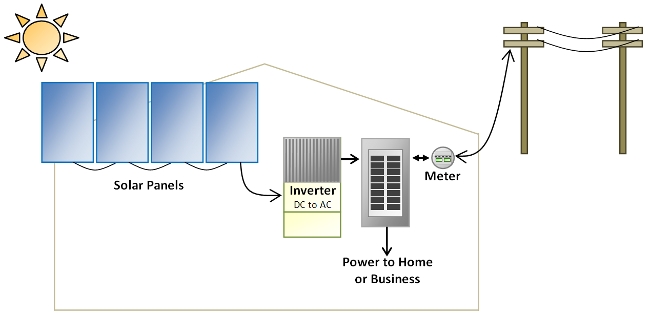
To maximize the energy production of the solar panel system, the panels need to be installed where they are exposed to a good amount of sunlight. This is the reason why the rooftop is an ideal location. Your home must have a very large and sunny roof with a 30-degree pitch.
However, if your roof does not meet these criteria, you also have the option of installing the panels on the ground. Nevertheless, the most ideal conditions are not needed and in fact, you do not have to live in a sunny area. Solar power generators can range in efficiency from just a few watts to power lighting and other auxiliary appliances to thousands of watts to power every appliance that you need.
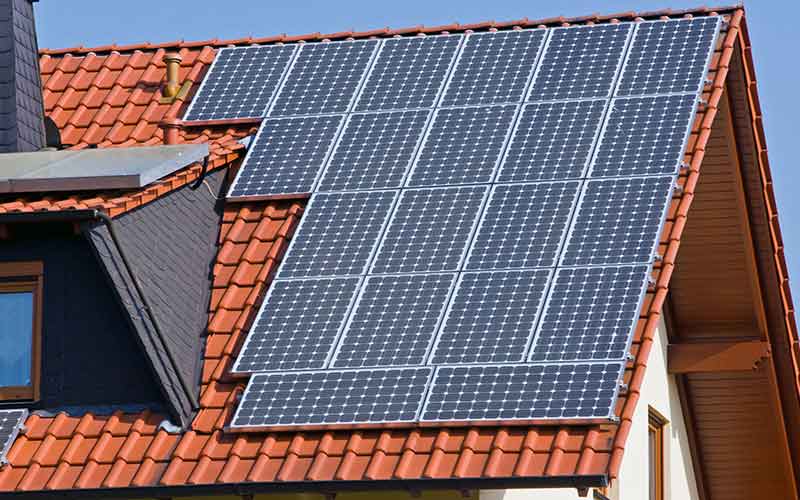
How Much Will the System Cost?
Costs to install full systems of solar power generators will greatly vary on your location and energy needs. You can expect to spend a couple of $1000s so that the system can provide for your whole house. This includes the entire system of solar panels, inverters, and batteries.
The best systems are custom-designed systems to fit your specific needs. Some of the considerations are the size of the home or building, is it used year-round, how many people live there, what types of power draws; water pumping, air conditioning, Jacuzzi, appliances, etc.
Off-Grid Solar Generator
This system is completely independent of conventional utility lines. All electric power used will come through the generator or its battery. While this system is more expensive and may involve more maintenance, sometimes it is the only choice. This is especially true in very rural areas or other properties that do not yet have standard electric lines in place. But other times it is simply a personal choice.
If you happen to live in a place where utility-generated power (electricity from the power company) is either unavailable or too costly to hook up to then stand-alone solar cell systems are often best.
How it works
Several components are involved to ensure the system works effectively.
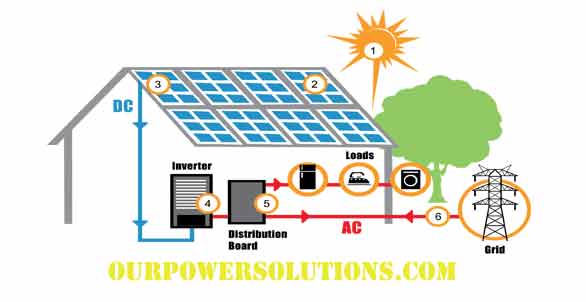
The sun shines on the PV Array producing direct current (DC) electricity.
The charge controller receives this electricity, it also controls the flow to the batteries to prevent overcharging damage.
The batteries receive the DC electrical energy and store it.
The Inverter converts this DC power to AC. The power from the inverter is then connected to your house breaker box from there it goes into your home.
Stand-alone solar cell systems have several advantages that make them suitable for these jobs. First, they produce energy where and when it is needed. Second, small systems are easy to transport and install. And solar cells (PV modules) only require occasional inspection and cleaning.
Hybrid Backup Systems
So if you see the value in being immune to energy disruptions and not being so dependent on the utility companies then it makes perfect sense to install backup power for your home or business. A solar backup power system is designed for when power outages occur, they kick into gear and start supplying your home or office with power so you can live your life without disruptions. In this system, energy flows from the Panels to a battery, once the battery is full excess power generated is can be fed to the grid.
Typical kits include some variations of three main parts. They are the solar panel(s), the battery bank, and a charge controller. The charge controller regulates the flow of energy into the battery. Since the amount of the sun’s energy reaching the solar panel can vary by the minute it is important that the flow of power going into the battery remain reasonably constant or else the battery can be damaged.
Another option with a generator kit is to build your own from scratch. The basic parts you would need to acquire individually might include a solar panel, charge controller, 12-volt battery, 12-volt cigarette lighter adapter, and a 100-volt inverter. This system would provide power to both AC and DC devices, and would cost much less than a pre-manufactured model.
Solar Power Generators Vs Gas Generators
So let’s compare this system to a generator that’s powered with gasoline. The problem with typical gasoline-powered generators is that they run on gas. If you’ve been to the gas pump lately you’ve seen how prices are creeping up. So it costs money to run these generators.
The second drawback I think you’ll agree is a big nuisance is that generators are very loud. And if you’re ever in a situation where the power goes out and you don’t want people nearby hearing that you do have power while they don’t then you’re at a disadvantage. Maybe a bit too survivalist in thinking, but it’s a consideration for some.
The next drawback is that once the gas in the tank runs out, and then your power is disrupted till you can refill the tank. And if you don’t have enough gas on supply, then guess what? No power for you. Obviously, if your power is out, then the local gas station probably won’t be able to provide gas as it’ll be shut down too.
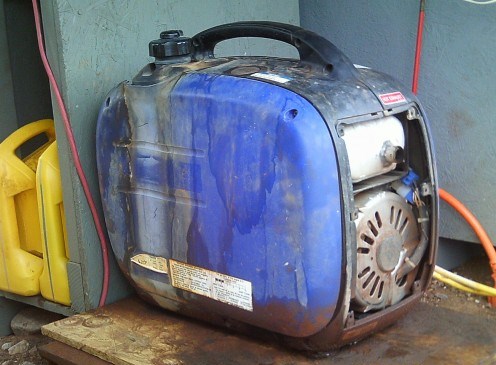
The next thing to consider is that gas-powered generators leave a significant carbon footprint. In other words, they pollute the environment. If you have a solar backup power system installed, then you have an advantage because you still get the electricity you need without the loud noise, there’s no need for gas, and there are no gas fumes to breathe.
Another advantage of a solar backup power system is that it has a long life span – twenty-five years without any down take – with little to no maintenance. It’s a no-brainer; it just makes sense to invest in a solar backup power system. It pays for itself in spades. However, there are some cases where you can combine a gas generator with a solar generator.
Solar generators offer several advantages not only to people but also to the environment where people are living and roaming around. First, solar generators are reliable sources of electrical energy during electrical power interruptions. No one will have their operations disrupted with a solar generator in hand.
Second, solar generators are very valuable in places where electricity is rare. Third, which is very essential, is its environment-friendly nature. Solar generators pose no harmful effects to the environment because they simply make use of the natural energy coming from the sun.
Solar generators aren’t the main sources of electrical energy. They are merely alternative resources of electrical energy. Yet, their presence keeps businesses and homes ongoing and without any interruptions that may cause hefty inconvenience or loss of revenue. Not only that. Utilizing the free sunlight saves you money in ways that are not harmful to the environment. By utilizing solar generators, you are in a way saving the environment.


Leave a Reply